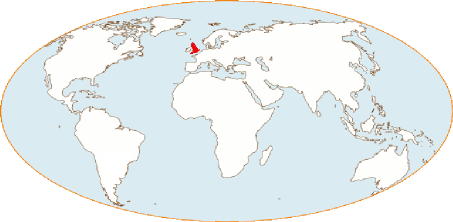Your search results [8 articles]
2 - The texts from Vindolanda about the brewery
Only a dozen of the several hundred tablets deal with brewing issues. But this handful of texts is of great value. Each document provides new information on brewing techniques, the beer and grain trade. Some of them confirm what was known about the place of beer in Nordic societies at that time. Others bring new data on malt, malting and the recycling by the brewer of spent grains sold as animal feed. Beer historians had only Roman writers as an almost unique source. They had to rely on these wine drinkers and beer critics. The Vindolanda tablets now offer them a rich documentation. Above all, these documents come from real economic life, not from literary creation.
2.1 List of the texts from Vindolanda about the brewery
|
Tablet 180 |
Account for a total volume of wheat of 320 modii (≈2758 litres) |
|
Tablet 182 |
Mention of the brewer nommé Atrectus |
|
Tablet 185 |
Faeci = dregs from beer brewing |
|
Tablet 186 |
1 metretes (54 litres) of ceruesae (celtic beer), value 8 asses |
|
Tablet 190 |
Ceruesae (celtic beer) 2 modii (17,2 l), 4 modii (34,4 l) of barley ceruesae (celtic beer) 3 modii x sextarii (25,8 l + …) |
|
Tablet 191 |
A record of braces = malt |
|
Tablet 343 |
119 modii = 1025 litres de malt without rootlets |
|
Tablet 348 |
Sale of bracis = malt |
|
Tablet 482 |
Mention of a Ceruesarum = brewer |
|
Tablet 581 |
Mention of a Ceruesarum = brewer |
|
Tablet 595 |
Braciarium ? = a malthouse ? |
|
Tablet 628 |
Request of beer for the soldiers to the prefest Cerialis. |
|
Tablet 645 |
Output of malt (bracis) stored in a house for payment |
|
Tablet 686 |
Mention of a braciarum = maltster |
2.2 Dating the tablets from Vindolanda
Robin Birley identified 5 periods of occupation and building of the Vindolanda fortress:
- Around 85-92 : initial buiding of the fort.
- Around 92-97 : enlargement du fort.
- Around 97-103 : gradual extension of the fort.
- Around 04-120 : abandon and re-occupation of the fort.
- Around 120-130 : partial neglect of the fort (link with the beginning of the construction of Hadrian's wall in 122?).
The tablets were written during periods 2 and 3, between the years 92 and 103, mostly before 102. They are official notes relating to trade with the Vindolanda camp, the personal or domestic affairs of the officers. The most important set of letters concerns the correspondence of Flavius Cerialis, prefect of the 9th cohort of the Batavians and that of his wife, Sulpicia Lepidina. Some of them come from civilian sub-contractors or merchants, for example Octavian, the author of tablet 343, an entrepreneur and maltster, no doubt a civilian, trading in wheat, barley, malt, pelts and sinews.
2.3 Units of measurement used in the texts of Vindolandas
Grain, malt and brewing by-products such as spent grains were measured by volume, not by weight. Beer was also counted in units of capacity, usually amphoras or standardised container sizes. This system made it possible to easily and quickly reconcile the volumes of grain used or sold to brew the beer, the volumes of malt produced and the delivered volumes of finished beer.
The modius and its subdivision the sextarius are the most common volume units. In the Vindolanda texts, they are used to measure liquids (beer, wine, oil) and 'dry products' (e.g. grains, malt, spent grains). There are also references to the metreta of beer (T. 186). These units are written in abbreviated form, modius (plural modii) by m with a dash above, sextarius (plural sextarii) by s divided by a dash. The half is indicated by semis, abbreviated to s.
|
Roman units |
Volume (litre) |
Gallon : pint |
|
1 modius = 16 sextarii |
8,62 |
1,93 : 15,44 |
|
1 sextarius |
0,54 |
0,12 : 0,96 |
|
1 metreta = 100 sextarii |
53,8 |
12 : 96 |
We know the capacity of most of the containers in which Vindolanda's supplies were transported. Many of the intact amphoras have survived during shipwrecks or in the tombs. The barrels were reused as reinforcements for the wells. Archaeologists were able to calculate their capacities. The painted signs (tituli dipinti) on the amphorae, in relation to their contents and volume, give figures very close to the calculated capacities.Note that the term amphora denotes both a type of container and a Roman unit of measurement equivalent to 3 modii, i.e. 25.8 litres or 46.3 pints.
|
Type of amphora (usual content) |
Capacity (modii) |
Litres (min-max) |
Gallons |
|
Barrels (wine, beer) |
40,6 à 156,6 |
350-1350 |
77-297 |
|
Dressel 1 (wine) |
2,8 à 44,5 |
24 |
5.28 |
|
Dressel 2-4 (wine) |
3,5 à 55,7 |
26-34 |
5,72-7,48 |
|
Dressel 20 (olive oil) |
6,9 à 111,4 |
40-80 (60-65 moy.) |
8,8-17,6 |
The denarius is the basis of the Roman coin system, a silver coin mixed with bronze. The value of staple foods was calculated in denarius, sestertius and as. Their equivalence and exchange value are given below, based on denarius.
|
Denarius |
Sestertius |
Dupondius |
As (asses) |
Semis |
Qadrans |
|
Silver |
Brass |
Brass |
Copper |
Brass |
Copper |
|
1 |
4 |
8 |
16 |
32 |
64 |



